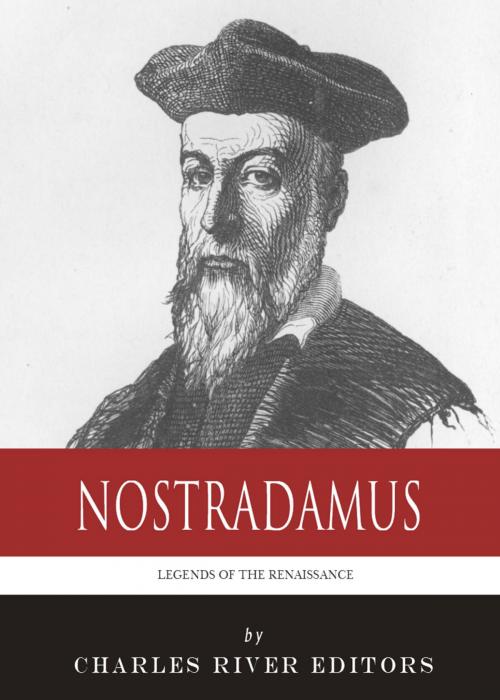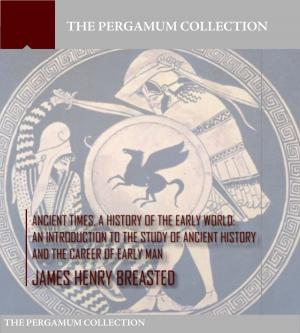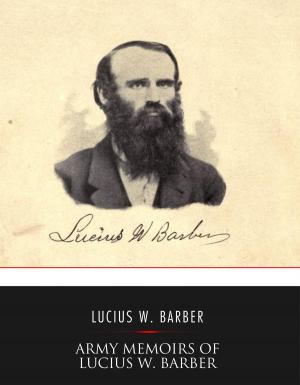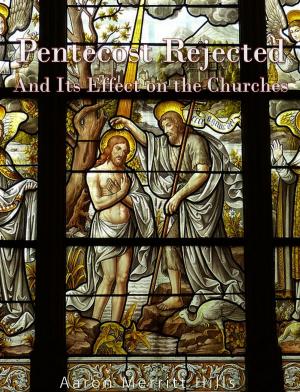Legends of the Renaissance: The Life and Legacy of Nostradamus
Nonfiction, Religion & Spirituality, New Age, Personal Transformation, Biography & Memoir, Historical| Author: | Charles River Editors | ISBN: | 9781475318753 |
| Publisher: | Charles River Editors | Publication: | October 22, 2012 |
| Imprint: | Language: | English |
| Author: | Charles River Editors |
| ISBN: | 9781475318753 |
| Publisher: | Charles River Editors |
| Publication: | October 22, 2012 |
| Imprint: | |
| Language: | English |
*Includes Nostradamus' most famous prophecies and discusses the various interpretations of them. *Includes pictures of Nostradamus and important people and places in his life.*Includes a Bibliography for further reading.*Includes a Table of Contents.I had determined to go as far as declaring in abstruse and puzzling utterances the future causes of the "common advent", even those truly cogent ones that I have foreseen. Yet lest whatever human changes may be to come should scandalise delicate ears, the whole thing is written in nebulous form, rather than as a clear prophecy of any kind. NostradamusA lot of ink has been spilled covering the lives of historys most influential figures, but how much of the forest is lost for the trees? When historians are asked to pick a point in history when Western civilization was transformed and guided down the path to modernity, most of them point to the Renaissance. Indeed, the Renaissance revolutionized art, philosophy, religion, sciences and math, with individuals like Galileo, Leonardo, Michelangelo, Raphael, Dante, and Petrarch bridging the past and modern society. In Charles River Editors Legends of the Renaissance, readers can get caught up to speed on the lives of the most important men and women of the Renaissance in the time it takes to finish a commute, while learning interesting facts long forgotten or never known. Its safe to say that there have been countless prophets and seers throughout history, but only one Nostradamus (1503-1566). Nostradamus has become a pop culture fixture even among those who find nothing of note in his work, and he is a cult figure among those who pore through his prophecies to look for proof that he foresaw major world events centuries ahead of time. Nostradamus spent most of his life as an apothecary at the height of the Renaissance taking hold across Europe, but by 1550 he was heavily involved in the occult and began to stop practicing medicine. That year he published an almanac that was successful enough to encourage him to keep putting out more almanacs annually. In the process he collected thousands of prophecies. In 1555, Nostradamus published his famous Prophecies, which was to be 1,000 quatrains that created undated prophecies, writing them in Greek, Italian, Latin, and French in the hopes of making his writing obscure enough to avoid religious persecution. Ineed, many considered Nostradamus a fraud or worse, but he found favor among the French Royal family, who found them spiritually inspired, sentiments encouraged by Nostradamus himself naturally. Over time, his other works faded into relative obscurity, but people continued to see what they wanted to see in his Prophecies, which Nostradamus had touted as the work of judicial astrology despite the fact professional astrologers of the time considered his work junk science. And while the Prophecies became wildly popular across the world and had thousands of different commentaries and editions published, modern scholars closely analyzing his writing have found that it is a mixture of Biblical prophecies, ancient end-of-the-world scenarios, and historically inspired events involving Ancient Romans like Sulla and Nero. Nostradamus took pains to claim that he was not truly a prophet, but his vague style has succeeded in making him a legend of history instantly recognizable by one name. Legends of the Renaissance: The Life and Legacy of Nostradamus looks at Nostradamus life and analyzes his Prophecies, the context within which they were authored, and the different interpretations that have arisen. Along with pictures of important people, places, and events in his life, you will learn about Nostradamus like you never have before, in no time at all.
*Includes Nostradamus' most famous prophecies and discusses the various interpretations of them. *Includes pictures of Nostradamus and important people and places in his life.*Includes a Bibliography for further reading.*Includes a Table of Contents.I had determined to go as far as declaring in abstruse and puzzling utterances the future causes of the "common advent", even those truly cogent ones that I have foreseen. Yet lest whatever human changes may be to come should scandalise delicate ears, the whole thing is written in nebulous form, rather than as a clear prophecy of any kind. NostradamusA lot of ink has been spilled covering the lives of historys most influential figures, but how much of the forest is lost for the trees? When historians are asked to pick a point in history when Western civilization was transformed and guided down the path to modernity, most of them point to the Renaissance. Indeed, the Renaissance revolutionized art, philosophy, religion, sciences and math, with individuals like Galileo, Leonardo, Michelangelo, Raphael, Dante, and Petrarch bridging the past and modern society. In Charles River Editors Legends of the Renaissance, readers can get caught up to speed on the lives of the most important men and women of the Renaissance in the time it takes to finish a commute, while learning interesting facts long forgotten or never known. Its safe to say that there have been countless prophets and seers throughout history, but only one Nostradamus (1503-1566). Nostradamus has become a pop culture fixture even among those who find nothing of note in his work, and he is a cult figure among those who pore through his prophecies to look for proof that he foresaw major world events centuries ahead of time. Nostradamus spent most of his life as an apothecary at the height of the Renaissance taking hold across Europe, but by 1550 he was heavily involved in the occult and began to stop practicing medicine. That year he published an almanac that was successful enough to encourage him to keep putting out more almanacs annually. In the process he collected thousands of prophecies. In 1555, Nostradamus published his famous Prophecies, which was to be 1,000 quatrains that created undated prophecies, writing them in Greek, Italian, Latin, and French in the hopes of making his writing obscure enough to avoid religious persecution. Ineed, many considered Nostradamus a fraud or worse, but he found favor among the French Royal family, who found them spiritually inspired, sentiments encouraged by Nostradamus himself naturally. Over time, his other works faded into relative obscurity, but people continued to see what they wanted to see in his Prophecies, which Nostradamus had touted as the work of judicial astrology despite the fact professional astrologers of the time considered his work junk science. And while the Prophecies became wildly popular across the world and had thousands of different commentaries and editions published, modern scholars closely analyzing his writing have found that it is a mixture of Biblical prophecies, ancient end-of-the-world scenarios, and historically inspired events involving Ancient Romans like Sulla and Nero. Nostradamus took pains to claim that he was not truly a prophet, but his vague style has succeeded in making him a legend of history instantly recognizable by one name. Legends of the Renaissance: The Life and Legacy of Nostradamus looks at Nostradamus life and analyzes his Prophecies, the context within which they were authored, and the different interpretations that have arisen. Along with pictures of important people, places, and events in his life, you will learn about Nostradamus like you never have before, in no time at all.















